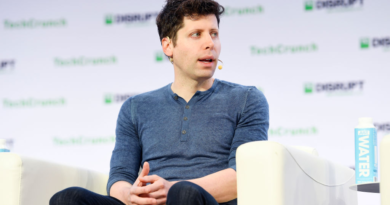VCs will get liquidity in 2024 from the secondary market, not IPOs
If you asked a bunch of VCs at the end of 2023 if the IPO market would finally open again in 2024, most of them would have said yes. We know because TechCrunch surveyed more than 40 of them in December and that’s what they said.
Yet, there are two weeks left in Q1, still no completed major IPOs, and very few in the works. Reddit is the only big-time IPO far enough along to be priced. Otherwise, there is just speculation on who might go public, with very few public SEC documents. For instance, there’s Shein, which reportedly filed a confidential S-1 last fall, or car rental marketplace Turo, which is still waiting on the sidelines after filing its initial S-1 in 2022.
It’s unclear if the markets will open again later this year even if Reddit’s offering is a hit. Secondary investors recently told TechCrunch that while Reddit could drum up some additional activity, it won’t likely be the opening of the IPO floodgates investors were hoping for. Plus, some of biggest names that were expected to go public this year — Databricks, Stripe and Plaid — have either directly said they won’t IPO in 2024 or have held funding events that imply they aren’t going out anytime soon.
While a lot of investors want IPOs to open back up in 2024, the market conditions aren’t ideal. Interest rates are still high, making money expensive and pulling investors away from equity into bonds; valuations are still depressed from their highs of 2021 with later-stage venture investors looking at gaining little — or even losing money — if their startups were to go public now.
But the prospects of getting liquidity in 2024 are not all doom and gloom if IPOs don’t return. Investors can, and have increasingly been turning to secondary marketplaces where private companies can authorize their shareholders to sell a limited amount of stock to approved investors. This is not a public sale. Stockholders can’t sell whenever to whomever. But in 2024, it’s become an often preferable substitute.
Transactions on secondaries rose from $35 billion in 2017 to $105 billion in 2021 and are expected to total $138 billion for 2023 when year-end tallies are available, according to data from Industry Ventures.
Secondary markets — the best of both worlds
Alan Vaksman, founding partner at Launchbay Capital, said that the secondaries market allows companies to get the best of both worlds. Startups are able to appease their investors looking for liquidity by allowing them to sell all or some of their company’s equity, without having to hold a premature exit event.
“It releases that pressure for liquidity for some of the investors,” Vaksman said. “You created liquidity for the ones you wanted to, you didn’t upset your late-stage investors and you are taking your time to grow. The secondary market allows for that now.”
Stripe’s recent secondary sale is a clear example of this. In February, Stripe announced it had come to an agreement with its investors to provide liquidity to its employees in a sale that valued the company at $65 billion. While that is down from the $95 billion valuation the company garnered in 2021, it’s a huge bump from their last primary round that valued the fintech at $50 billion last year.
This secondary sale shows that investors are willing to keep building Stripe’s valuation back up toward its 2021 high and that it’s easy for employees to get cash for some of their stock prior to an IPO event. So why would Stripe want to go public in 2024 before its valuation fully recovered?
Secondary markets have always been aimed at employees. What’s newer is that VC funds and LPs have begun to lean on them. Nate Leung, a partner at Sapphire Ventures, said that firms can choose to offload some shares to free up some cash, while keeping some of their stake. But firms can also use them to buy stock and increase their stakes in promising startups.
Leung said that Sapphire deployed roughly $500 million into the secondary market in 2023 and expects to deploy the same if not more into secondary stakes in 2024.
Shasta Ventures reportedly hired Jefferies Financial for a “strip sale” Bloomberg reported, meaning it was searching for secondary buyers for a selection of its portfolio holdings. The report didn’t include which startups it’s looking to sell but its portfolio includes companies like Canva, which Shasta backed in its 2013 seed round and is now worth an estimated $40 billion according to secondary data platform Caplight.
The IPO market won’t stay frozen forever. But given the maturation of the secondary market, it doesn’t need to thaw before the market is really ready.
The secondary market “is playing a huge role,” Leung said regarding companies waiting to go public. “You can achieve lots of your original goals for both employee and investor liquidity, and the LPs, by fully selling or structuring secondaries deals. [LPs] are not pressuring the GPs to push out their assets, which reduces the demand for the public market.”




